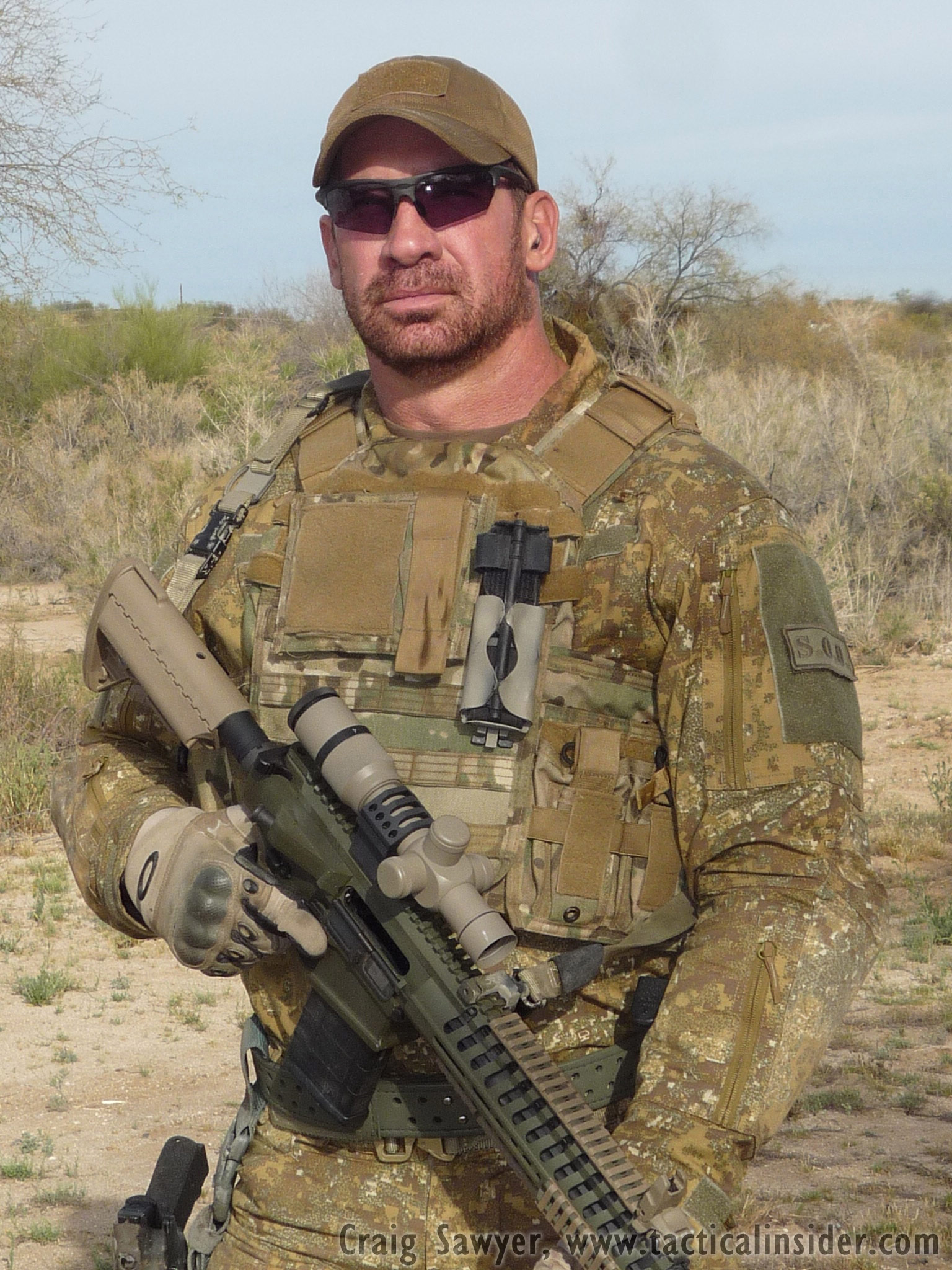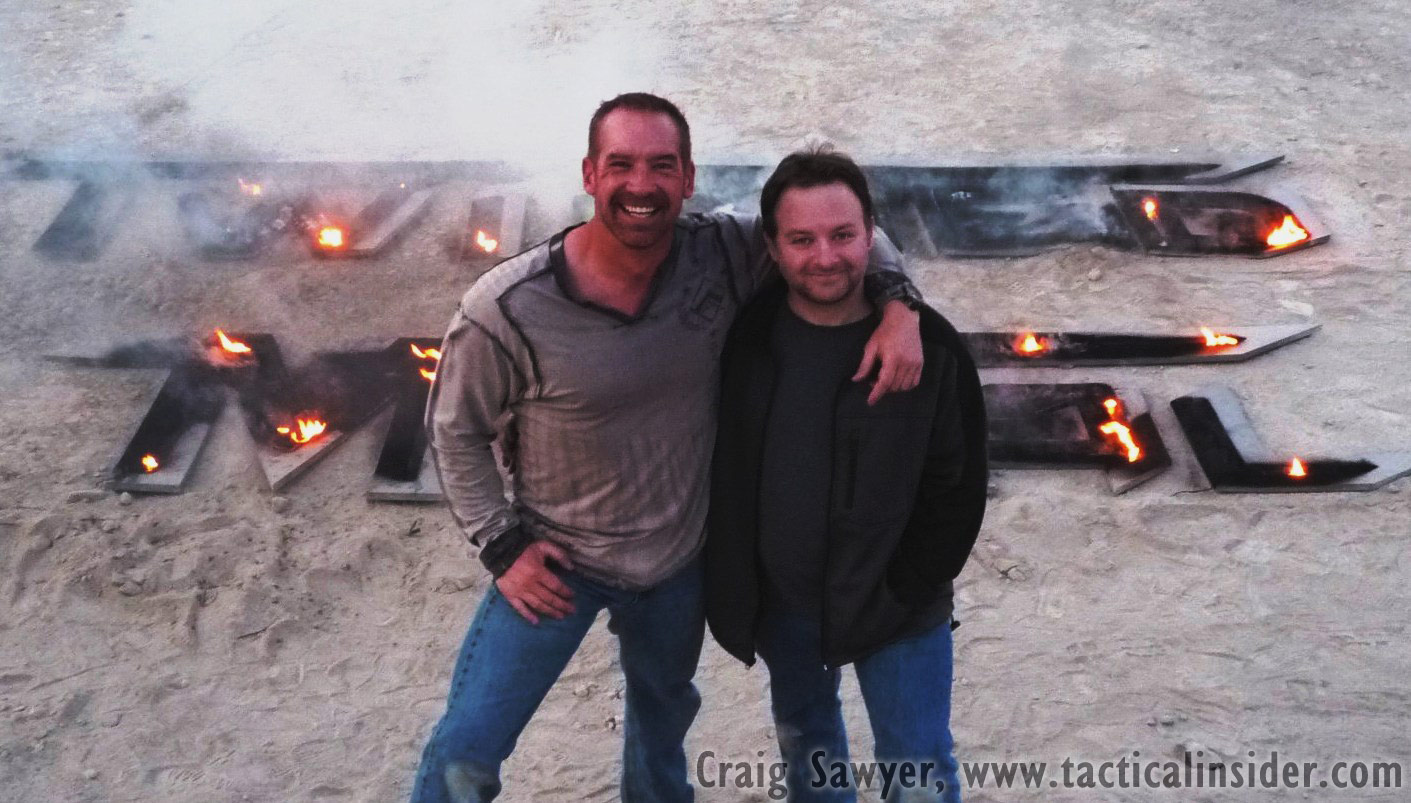Angelini Talks Gaming With DEVGRU Operator Craig Sawyer
Craig Sawyer On Gaming Realism
Today I have the distinct privilege of sitting down with Craig Sawyer, a retired U.S. Navy SEAL, DEVGRU operator, and on-camera expert for the History Channel series Top Shot.
Craig was diligent at every point in our discussion to ensure he maintained operational security regarding his former unit, equipment, and tactics, which the Tom's Hardware editorial department respects. We did not pursue questions that would violate OPSEC or Craig’s oath to his unit and teammates.
Everyone here at Tom's Hardware enjoys PC gaming. But our opinions diverge when it comes to the degree of realism we want to experience in our favorite title. With Call of Duty: Black Ops II now available (and notoriously skewed toward a fast-paced arcade style), we wanted to get feedback on realism in gaming from someone with actual combat experience.
Craig is already involved in consulting for film, drawing from his extensive experience in the military, providing security for U.S. dignitaries, and training other professionals. As a personal fan of a more realistic gaming experience, I’d like to see ISVs work with Tier 1 soldiers like Craig to make their titles more visceral.
Tom's Hardware: To that end, Craig, you probably already know that game developers employ different degrees of realism in their titles. Even as the detail and texture quality enabled by their engines improves universally, franchises like Call of Duty tend to encourage running-and-gunning. I found myself moving through Battlefield 3 at a much more deliberate pace, picking up weapons based on the mission at hand. Where along that scale would you like to see shooters go?
Craig Sawyer: Hey, happy to contribute! This will definitely be a kick! As far as realism and gaming style go, I like to consider the objective at hand: "What's the game for?"
If it's a realistic training environment we're after, then of course I'd be looking for accurate weapons representations and appropriate tactical judgments for each mission or scenario. If we're instead looking for sheer fun factor, which is more often the case, then realism necessarily falls to second priority in favor of the excitement and satisfaction of playing the game with wild (even artificial) variables.
Get Tom's Hardware's best news and in-depth reviews, straight to your inbox.
So, do you want to train to be a real operator, or do you just wanna get your blast on and shoot stuff up? Both goals are legitimate in their own right. Where you fall on the scale depends on what you want from the game.
Tom's Hardware: The lack of a fatigue factor, even in fairly realistic first-person shooters, has always bothered me. Most titles allow you to sprint briefly before slowing down to a run, but you’re able to shoot, jump, and then, seconds later, sprint again. Is this something that needs to change in the next generation of games, or would "the real thing" be a total turn-off for a gamer? Realistically, after a dead sprint, can you hit a human-size target at 100 yards?
Craig Sawyer: I can totally understand why developers allow so much sprinting in their games. After all, if you're forced to heed the real limitations of our bodies, the game experience slows down dramatically. Gamers like speed. So, as a result, slowing to more realistic movements would, in many cases, make the game less exciting. We have to consider the fact that the gamer is in no mortal danger. His life and the lives of his teammates are not in actual jeopardy. Without that genuine danger, game creators need to ramp up the speed, keeping the dynamics big and fascinating to outweigh the loss of sensory input of a real life-and-death situation.
Can I hit a target at 100 yards after a dead sprint? Yes! That took a lot of time and effort to develop, and it's not something that all operators are equally good at in real life. So, I wouldn't expect each operator in a game to pull that off each time, either.
Current page: Craig Sawyer On Gaming Realism
Next Page Sniper: You're Either Effective Or Dead-
jaquith Very interesting article and special thanks to Craig Sawyer!Reply
We did not pursue questions that would violate OPSEC
Yeah, we wouldn't want another MoH overreaction.
The lack of a fatigue factor, even in fairly realistic first-person shooters, has always bothered me. Most titles allow you to sprint briefly before slowing down to a run, but you’re able to shoot, jump, and then, seconds later, sprint again. Is this something that needs to change in the next generation of games, or would "the real thing" be a total turn-off for a gamer?
Try Paintball. Otherwise VR with electric shock. Either way, IMO very few want total or close to realism in gaming other than theatrics. Listen, I've been shot by a 22mm that grazed off my knee taking-off a piece of meat -- getting welted-up from paintball's or electric shock is a cake walk.
Personally, I'm far from a SEAL (really far) but I like my guns, and my Glock 19 with a LaserMax will make folks think twice about leaving in a home invasion - it's there as fast as I can reach. The POF-USA P308-12-MRR 7.62mm NATO is indeed sweet and ain't cheap; just what every 'deer' hunter needs.
-
Pawessum16 Correction on page 2:Reply
Tom's Hardware: I think all gamers remember the Call of Duty: Modern Warfare 2 scene where you're a sniper in the top floor of a building in Chernobyl. As a real U.S. Navy SEAL sniper, how accurate is this experience?
I remember that so well that I know for a fact that it happened in the original Modern Warfare, ie COD4: Modern Warfare.....before they stopped the numbering.
And after finishing reading the article, I'd like to add that it was pretty great. To someone like me who doesn't know a thing about real world combat, it was very insightful, and Sawyer made some good points about the direction of the gaming industry in regards to shooters. -
Chewie Accuracy's my biggest problem with Crysis, to this day. I especially remember a point early in the first game where I like to lie down in the grass and take out the Norks manning MG emplacements that just can't seem to see me. The problem was, with the Assault Scope I was taking 3 or 4 shots to get a head shot on these guys. The reticle covered the whole head! I checked the range range with the visor, or binocs, or whatever, and got a range of 80m!Reply
Now, I'm no sniper dude, but I can get multiple 2 inch 5 round groups at 200 metres with the Steyr AUG, and that has a 1.5x optical scope. Also, no cool crysis suit to help. So at 80m, firing from prone, you bet your arse I can pick which eye to take out. But not in Crysis. Most of the other stuff about that group of games is cool, but the accuracy issue drives me nuts every time. -
army_ant7 ReplyTom’s Hardware: What is Sleep, Eat, and Lift?
Chris, I bet you were making your prayers and cringing already while he was saying that. :lol:
Craig Sawyer: Hey! Are you punking me, man!? Hah.
I'm kidding of course. :P But I know I would, knowing that guy could snap my neck with one hand! :lol:
That aside, a great read! I thank you and Mr. Sawyer there. :D I giggled at the thought of how ridiculous the things we do in games are, and imagined it in real life. Seeing those CoD (and others) commercials would make think they're silly now albeit still cool. :lol: -
US_Ranger Good article. I especially liked the part about posers. That shit always bothers me and I've run into my fair share of them as well.Reply
Sua Sponte Craig, good luck in your new endeavors. -
mapesdhs Thankyou so much for this article Chris! The most interesting piece I've read on any site forReply
a long time.
Best wishes & respect to Craig and all his colleagues.
Ian.
-
happyballz ChewieAccuracy's my biggest problem with Crysis, to this day. I especially remember a point early in the first game where I like to lie down in the grass and take out the Norks manning MG emplacements that just can't seem to see me. The problem was, with the Assault Scope I was taking 3 or 4 shots to get a head shot on these guys. The reticle covered the whole head! I checked the range range with the visor, or binocs, or whatever, and got a range of 80m!Now, I'm no sniper dude, but I can get multiple 2 inch 5 round groups at 200 metres with the Steyr AUG, and that has a 1.5x optical scope. Also, no cool crysis suit to help. So at 80m, firing from prone, you bet your arse I can pick which eye to take out. But not in Crysis. Most of the other stuff about that group of games is cool, but the accuracy issue drives me nuts every time.Reply
I personally participate in bolt-action rifle competitions up to 1000yards but...AUG A’s 1.5x optical scope with 2 inch groups at 200m? You better have used a fully locked bench rest for that...AKA you were just pressing the trigger and the bench was holding aim. Otherwise I really doubt your "consistent" 5 round groups; I have used A1's reticle 1.5x scope before, and after 100-150 yards the "donut" reticle covers too much to know where the true center is. So you either very lucky repeatedly or are over exaggerating a bit. -
mayankleoboy1 happyballzSo you either very lucky repeatedly or are over exaggerating a bit.Reply
Or he has practiced lots and lots more than you -
stevelord One of my favorite experts on Top Shot. Can't wait till the next season (which has been filming since September I believe.)Reply


